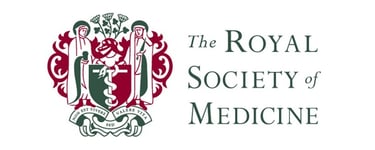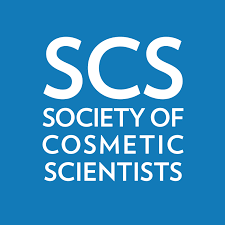Colour Beauty Decorative Cosmetic Base Formulations
At Cosmetic Scientist, we empower our customers with a variety of Colour Care Base formulas crafted by expert cosmetic scientists, allowing them the freedom to create their own unique formulations. Each formula is accompanied by detailed information on where to source the necessary raw materials within the UK, ensuring a seamless procurement process. Additionally, we provide clear, step-by-step instructions on how to transform these base formulas into finished products. To further support our customers, we offer a complimentary 30 minute consultation call to address any questions or provide guidance on the formulation process. Whether you're a seasoned formulator or just starting, we are here to assist you in bringing your cosmetic creations to life. Call to Book for an introduction call 0207 6327557.


Starting your own cosmetic crafting journey can be both exciting and overwhelming, and using base Colour Decorative cosmetic formulations is often the best option for newcomers. These formulations provide a solid foundation, allowing crafters to experiment with textures, scents, and colours without getting lost in the complexities of creating products from scratch. By beginning with established bases, you can focus on enhancing your creations with personal touches, like essential oils or natural extracts, helping to hone your skills while minimising the risk of unwanted reactions. Additionally, using base formulations helps maintain consistency in your products, which is essential when testing new ideas or sharing with friends and family. Ultimately, this approach not only simplifies the crafting process but also boosts confidence, encouraging enthusiasts to explore their creativity in the world of cosmetics.
Memberships




Formulating decorative and colour cosmetic products is a complex and creative endeavour that requires a blend of science, artistry, and an understanding of consumer preferences. Cosmetic scientists play a crucial role in this process, and their approach can be broken down into several key stages:
1. Understanding Market Trends and Consumer Needs
Cosmetic scientists begin by analysing market trends, consumer preferences, and competitive products. They conduct thorough research to identify the latest industry trends, colours in vogue, and technologies that appeal to the target demographic. This stage often involves surveys, focus groups, and reviews of market reports to ensure the formulations align with consumer desires and expectations.
2. Defining Product Objectives
With insights gathered, scientists set clear objectives for the product. These objectives encompass aspects such as the type of finish (matte, glossy, etc.), the desired coverage (sheer, full), skin types targeted (oily, dry, sensitive), and the product's usability (long-lasting, easy to apply). Defining these objectives provides direction for the entire formulation process.
3. Selection of Ingredients
Cosmetic formulation heavily relies on ingredient selection. Scientists choose a mix of pigments, colourants, emulsifiers, stabilisers, preservatives, and active ingredients. For colour cosmetics, the selection of pigments is particularly vital:
- Pigments: These provide colour but impact texture and application. The choice between organic and inorganic pigments affects not just appearance but also safety and stability.
- Binders and Extenders: These ingredients help in adhering pigments to the skin and ensuring longevity.
- Texturizers: Varying textures can be achieved through the careful choice of oils, waxes, and silicones, influencing tactile sensations and application experience.
- Functional Ingredients: These may include moisturisers, anti-ageing elements, or sun protection factors (SPFs), which enhance the overall appeal of the product.
4. Formulation Development
With ingredients selected, scientists start the formulation process. This includes the following:
- Creating Prototypes: Initial formulations, or prototypes, are made by combining various ingredients based on desired characteristics. Several iterations may be necessary as scientists test for compatibility and performance.
- Mixing Techniques: Depending on the product type (liquid foundation, lipstick, eyeshadow), different mixing techniques-such as shear mixing or high-shear blending-are employed to ensure a homogeneous blend.
- Formulation Stability Testing: Stability tests, including ageing, freeze-thaw cycles, and accelerated temperature conditions, are conducted to assess how the formula performs over time. This testing is crucial for determining the product's shelf life and effectiveness.
5. Colour Matching and Testing
In decorative cosmetics, achieving the correct shade is paramount. Cosmetic scientists often utilise spectrophotometers to measure colour and adjust formulations accordingly. Colour matching is a meticulous process, requiring multiple samples and adjustments to ensure consistency in batch production.
6. Safety and Regulatory Considerations
Safety is integral to cosmetics formulation. Cosmetic scientists must ensure that the formulation adheres to regulatory guidelines established by governing bodies like the FDA (in the U.S.) or the EU Cosmetics Regulation. This includes conducting safety assessments to evaluate the potential for skin irritation, allergies, and disposal implications for ingredients used.
7. User Trials and Feedback
After developing a stable formulation, scientists conduct user trials to gather feedback from participants. This feedback is invaluable for refining the product before launch; users provide insights into application, wear time, and overall satisfaction. Adjustments made based on this feedback can significantly enhance the final product's reception in the market.
8. Packaging and Marketing Considerations
Once the formulation is finalised, considerations about packaging are made. The choice of packaging can affect product stability, usage, and consumer appeal. Cosmetic scientists often work closely with marketing teams to ensure that the visual aspects of the packaging align with the product's image and target audience.
9. Production Scaling and Launch
After successful trials and marketing strategies are approved, the formulation is scaled up for production. This involves meticulous attention to detail to ensure that each batch maintains the same quality and characteristics as the prototypes. Once produced, the new cosmetic line is launched, often accompanied by a strong marketing push to attract consumers.
Conclusion
The role of a cosmetic scientist in formulating decorative and colour cosmetics is multifaceted and requires a blend of creative thinking and scientific rigour. From understanding market demands to ensuring safety compliance, each step in the formulation process is crucial to creating successful cosmetic products that meet consumer expectations. As trends evolve, cosmetic scientists must continue to innovate and adapt, pushing the boundaries of cosmetic formulations to develop exciting new products in the beauty industry.
Address
Cosmetic Scientist C/O Harley St Cosmetic Ltd
85 Great Portalnd St, London W1W 7LT
Contacts
Contact@CosmeticScientist.com
Tel +44 0207 6327557
Subscribe to our newsletter
